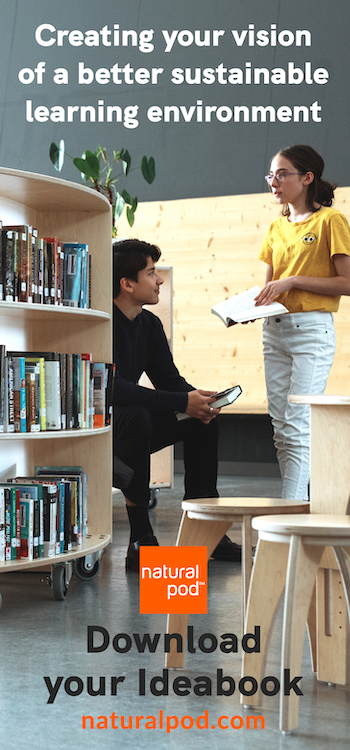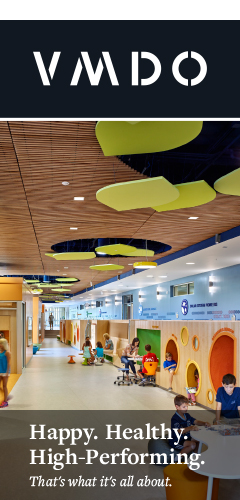By. Constance Flanagan, Erin Gallay, and Ethan Lowenstein
“This is me, I’m giving back to my community, bettering it. I should keep this up. I go home and started planting trees. Worked with my neighbors, they came out cause they found it interesting that I was doing it.” – Student
For the past several years, our team of scholars and educators from the University of Wisconsin-Madison and Southeast Michigan has been documenting what students in urban schools learn by engaging in place-based environmental science learning/action projects. In particular, we’ve focused on youth of color in urban schools, groups who haven’t been at the forefront of environmental education. Our goal is to understand the potential of a unique model of citizen science that emphasizes the intersection of scientific learning with civic action: students contributing to their communities by applying scientific methods and content to address a local environmental problem. They do so in partnership with their teachers and adults from the local community who work or volunteer in some field of environmental stewardship. The partnership framework makes these projects distinct from the prototypical citizen science model in which scientists recruit lay people (aka citizens) to collect data that, ultimately, the scientists analyze. In the projects we are documenting, everyone is a scientist working with fellow citizens to improve the environment and, by extension, the health of people in their urban ecology.
The projects that we are documenting build on a model of place-based education (PBE) developed by the Southeast Michigan Stewardship Coalition (SEMIS Coalition). The SEMIS Coalition systematically supports the success of place-based educators through a four-pronged approach:
- the development of transformative school-community partnerships;
- nine days of professional development;
- on-site curriculum coaching; and
- direct assistance in fostering youth voice and leadership, including an annual community forum where students present their projects and run workshops for the broader community.
The SEMIS Coalition’s approach to PBE rests on three anchor teaching practices: student-driven inquiry, understanding and connection to place, and informed civic engagement. In PBE, the community becomes the classroom. This means that students are able to study questions that are meaningful to them, and youth and adult partners combine their strengths to identify and address issues of public concern. The SEMIS Coalition is part of a larger network of place-based school-community partner hubs across the state of Michigan that use the same model and are organized and facilitated by the Great Lakes Stewardship Initiative.
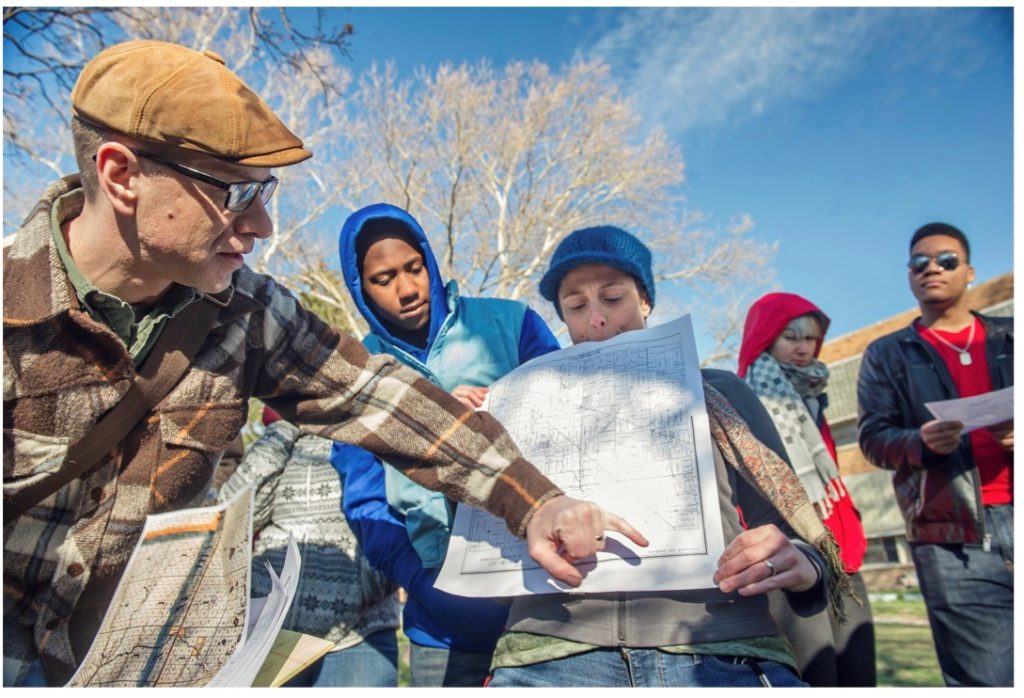
Insofar as projects respond to the environmental issues and learning opportunities of a local place, the content varies. For some projects, students have installed green infrastructure (e.g., rain gardens, bioswales) to address stormwater and flooding in their community. For others, students investigated ways to remediate pollutants in local waterways or studied sustainable farming practices used in community gardens as a way to address food injustice. Some projects occur over several years, such as the efforts of teachers, students, and community partners to reclaim abandoned properties near their school and rebuild them as community parks. Despite the diversity in content, all projects reflect core practices consistent with an action civics approach: the integration of learning with civic action, a collective or team approach to learning and action, and public presentations of student work.
What does civic environmental science look like in action? Here are a few examples. In one project, high school students in an urban community worked with a local sustainable community development and education organization to investigate energy efficiency in their school and community. Students canvassed their neighborhoods to conduct free energy consultations and efficiency assessments, and installed energy saving upgrades in neighborhood homes. They led community workshops, teaching residents how to do energy audits and be more efficient users, and presented their work at regional stewardship conferences. Adults in the neighborhood considered these students the “go to” experts on energy and the environment.
In another urban community, high school math students were challenged to become stewards of their community and propose changes that they could implement to improve their school campus. With the help of a local environmental STEM education organization, students learned about ecosystem services and the benefits of green infrastructure. They then worked on and presented formal proposals for campus green infrastructure installations to their school’s grounds department. Receiving approval, students planted native seedlings on campus and forged relationships with the facilities and grounds departments that will open the door for future stewardship work on campus and in the community.
In a third project, upper elementary students investigated local water quality problems, non-point source pollution, and stormwater management. Students researched rain gardens as a solution to stormwater runoff issues in their community. Working with a local governmental agency, they designed and planted a rain garden on their school grounds to mitigate flooding and improve water quality. They wrote letters to their city administrator requesting that the city fund rain gardens within city limits and presented their research to City Council members and the Mayor, advocating for public support of these bioretention systems. Students took civic action – applying their STEM learning to address a local environmental issue and practicing civic skills of communication and advocacy – and learned about representative government in the process.
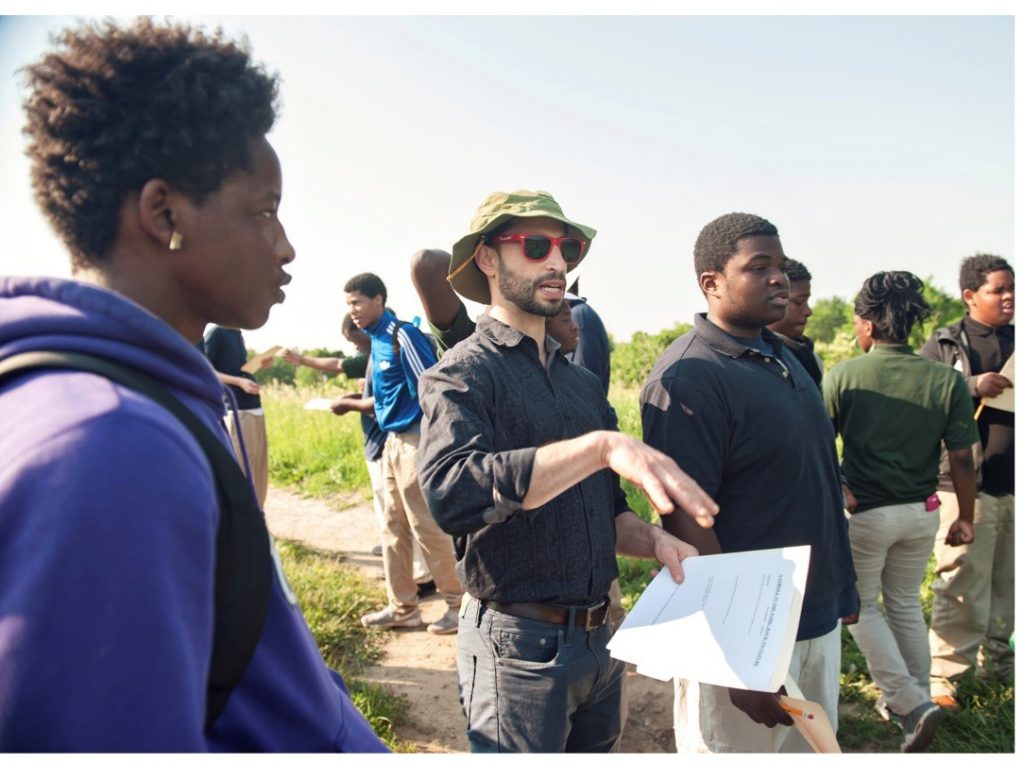
What have we learned about best practices and student learning from these projects?
- Students become more confident about their capacities to learn and apply science to help their community. This is due in part to the fact that they are doing science rather than just studying content and that teachers and community partners are regularly pointing out how they are applying the content and methods learned in science and math to the action.
- This egalitarian approach to citizen science demystifies the scientific enterprise. Students learn that science is an iterative process that benefits from many different experiences and perspectives. To achieve that awareness means that adult educators have to be patient with the process of student inquiry rather than telling students the “right” answer.
- Students’ ideas about the utility of science and the relevance of work in STEM fields to society expand, as do their ideas of STEM career paths. After engaging in projects, students were more likely to believe that science is useful for solving problems in communities like theirs and that scientists work on problems that affect communities like theirs.
- Students gained confidence in their civic-science capacities. After completing projects, they were more convinced that they could gather and analyze data, listen to others’ insights, and develop a plan of action; identify adults and organizations who are dedicated to environmental improvement; and communicate with and recruit others into civic action. Notably, these are the kinds of science literacy skills emphasized in the Next Generation Science Standards.
In our view, the collective nature of these projects is worth special mention. Civic work is not a solo activity. It compels us to wrangle together over how we are going to solve problems and improve our communities. It involves working toward shared goals with others with whom we may disagree. Students learned that this is not easy work, but it’s work to which they are committed. One of our favorite quotes was from a student who, when asked to reflect on what she learned from engaging in teamwork, said, “You may not like all the people in your group but, at the end of the day, you’re all trying to accomplish one thing – that’s make this community better. So, you’d better kick your problems to the side and get on with the work.”
Teachers also are cognizant of the civic identities students gain through teamwork as captured in this teacher’s observation, “There was an idea that they [students] were representing something, which they don’t always get to do…There is a different dynamic when you are learning as a team versus in a class.” Echoing her sentiment, another student expressed that by working as a member of the team, he had gained stronger commitments to his community: “It was important for me to work and be a member of the Eco Group because it helped me believe in my community. At first, I really didn’t care about my surroundings but working with the Eco Group made me realize I need to do something about it.”
Environmental challenges, especially those exacerbated by climate change, are arguably the biggest civic and social justice issues that future generations will face. Thus, it’s myopic to restrict environmental decision-making to “the experts.” Rather, scientific understanding combined with civic action is essential for building the capacities of younger generations to make informed decisions.
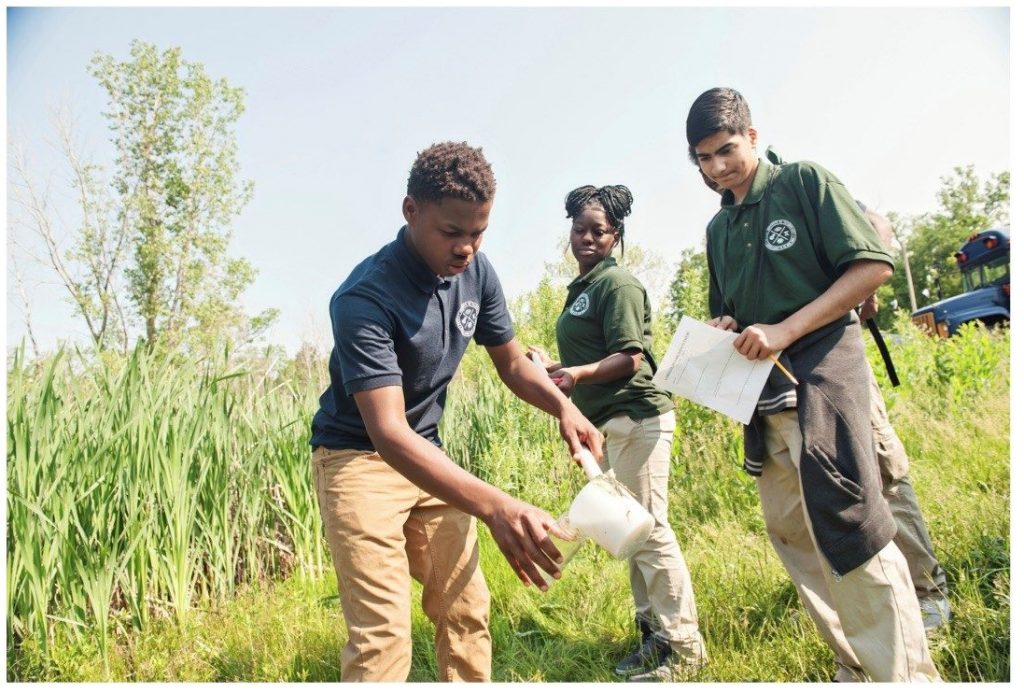
The projects we have documented take place in urban communities. In contrast to a concept of nature as wilderness away from urban life, the focus is on the interdependence of the human and natural worlds in the urban ecology. As such, an essential part of students’ learning is drawing their attention to the natural environment where they live and how the everyday actions of humans impact that environment. Because projects focus on local place, students can observe and monitor change on a daily basis. And because adults reinforce the positive impact they are having by applying STEM learning, students become aware of their capacities to steward the environment.
Within environmental education, there is a belief that young people should learn to love the Earth but that negative messages about the scale of human impact might overwhelm them. We agree that “scare” techniques are detrimental. Our work suggests that children and adolescents are eager to step up to the challenge, but it’s important that they understand they don’t have to face the challenge alone. Indeed, students will feel empowered to act when they work in teams with peers and adults who share their commitment to local environmental action and when they see that, through their efforts, cleaner and healthier communities are possible.
Acknowledgements: This material is based on work supported by the Spencer Foundation (Grant No. 201800158) and the National Science Foundation (Grant No.1759291). Any findings, conclusions, or recommendations expressed are those of the authors and do not necessarily reflect the views of the National Science Foundation or the Spencer Foundation.
Author Bios
Constance Flanagan is the Vaughan Bascom Professor in Women, Family, and Community and Associate Dean in the School of Human Ecology at the University of Wisconsin-Madison. Her scholarship focuses on factors that foster identification with and action for the common good in young people. Her current work focuses on the impact on urban youth of engaging in citizen science projects that combine STEM learning with collective action to mitigate environmental problems in their local communities and is funded by the National Science Foundation and the Spencer Foundation.
Erin Gallay is a Research Program Manager at the University of Wisconsin-Madison, where she studies youth environmental commons activism and the development of STEM interest and dispositions with under-represented populations. Erin is a practitioner and scholar of civic environmental engagement and place-based stewardship education. She has over two decades of experience in leading environmental education programs, teacher professional development in place-based stewardship and civic ecology education, and conducting research on youth civic environmental activism.
Dr. Ethan Lowenstein is a Professor of Curriculum and Instruction at Eastern Michigan University and the Director of the Southeast Michigan Stewardship Coalition (SEMIS Coalition), a professional development network of schools, community partners, K-12 teachers, and university educators working together to address serious ecological and social problems in Southeast Michigan. The SEMIS Coalition is a hub of the Great Lakes Stewardship Initiative, the only statewide effort in the country focused on place-based education. He has two decades of experience in school systems reform, educational leadership development, and teacher professional development in moral, civic, and place-based education.


